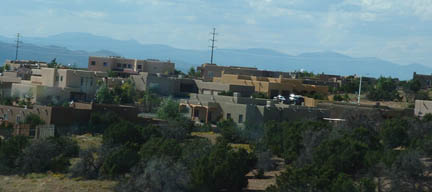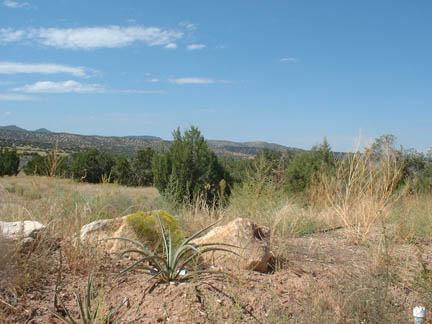I’ve been watching the third season of the new Dr. Who series on the Sci-Fi Channel, and I’m surprised to find that I’m really enjoying it. I watched the first season (or series as they say in Britain), and although the production values were way above the original show, I couldn’t quite accept Christopher Eccleston as The Doctor. He was too serious and testy for my taste. David Tennant, on the other hand, has the friendly, quirky quality I associate more with The Doctor, and he embodies a certain vulnerability that no other actor has ever brought to the role. I’m really glad that the BBC found a way to resurrect such a great character and make him relevant to the 21st century.
As an American kid in the 70s, Dr. Who was one of those mysterious legends that I read scant bits about but could never see. I knew that it was a long-running British science fiction show, but that was about it. The confusion only grew when I would see pictures of different actors listed as The Doctor. Were these misprints? How could the character get younger over time rather than older? I was really dying to see this show, but for some strange reason, it was never syndicated in the U.S.? We could have Monty Python; why not Dr. Who?
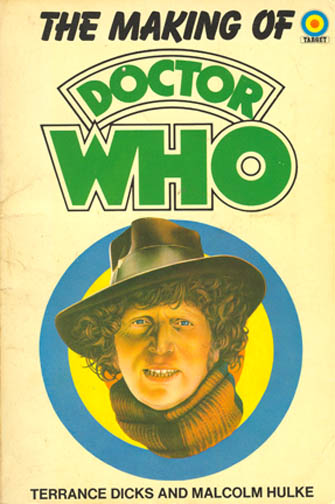 My interest was further heightened when I stumbled across a book called The Making of Dr. Who at my local comic/used book store in the fall of ‘77. Although it was a slim volume aimed at the pre-teen market Dr. Who primarily served, I found it a well-spring of valuable knowledge on this mysterious TV show from across the pond. The book explained the whole production history, from its roots as an educational show on history and science to its transformation into a monster-filled adventure show for all ages. The book also explained how The Doctor had the ability to change his physical form whenever he became seriously ill. This was a great excuse when they had to hire a new actor to fill the role, but it also allowed producers the opportunity to re-invent the character and the very nature of the show every few years, keeping it fresh and adapting to changing tastes.
My interest was further heightened when I stumbled across a book called The Making of Dr. Who at my local comic/used book store in the fall of ‘77. Although it was a slim volume aimed at the pre-teen market Dr. Who primarily served, I found it a well-spring of valuable knowledge on this mysterious TV show from across the pond. The book explained the whole production history, from its roots as an educational show on history and science to its transformation into a monster-filled adventure show for all ages. The book also explained how The Doctor had the ability to change his physical form whenever he became seriously ill. This was a great excuse when they had to hire a new actor to fill the role, but it also allowed producers the opportunity to re-invent the character and the very nature of the show every few years, keeping it fresh and adapting to changing tastes.
At the time, Tom Baker was playing Dr. Who in his fourth incarnation. Baker would become the most famous Doctor, with his trademark floppy hat and flowing scarf standing as icons for the series. While he was certainly the most unique of the Doctors, I was more interested in his predecessor, Jon Pertwee. Although primarily a comedic actor, Pertwee was a dashing figure with an elegant pile of curly silver locks and an athletic stride. He chose to play The Doctor as an eccentric James Bond, wearing smoking jackets and frilly shirts while beating up bad guys with his Venusian Akito. Further solidifying his Bondian mystique was the fact that he spent most of his adventures on Earth, working for a group called U.N.I.T. (United Nations Intelligence Taskforce). This group fought aliens bent on taking over the planet. Who knew so many aliens would choose to start their wars in quarries near Sussex? As a 13 year old, I could ignore the silly premise. I was fascinated by this flamboyant dandy of a hero and his family of soldiers and scientists with whom he worked. My pubescent hormones also liked his young, pretty assistants which I learned of from the picture section of the book.
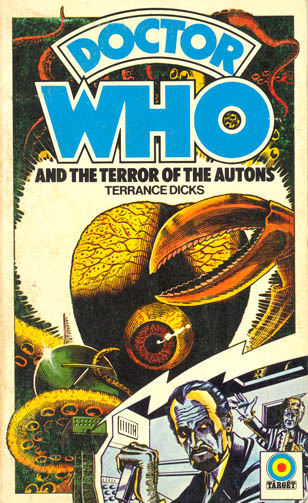 Now I was dying to see this program. I wrote to my local independent TV station WBFF-TV Channel 45, but they informed me the show was not available in syndication. My next best bet was to acquire the novelizations based on the TV serials, but since they were published in England, they were almost as hard to find as the show itself. My initial books were purchased at science fiction conventions, then the book store I mentioned earlier would get some in and set them aside for me. These short, easy-to-read novels only piqued my interest even more. I would learn later that reading the books without prior knowledge of the show was an asset, since I could make the stories as elaborate as I wanted in my mind, free from the limitations of a miniscule BBC budget. One perfect example of this was in the book titled Terror of the Autons. On the cover and in the novel itself, the Autons appear in the form of this huge, bizarre Chimeras-type creature with body parts that don’t seem to belong to the same creature. In the book, the fight to destroy this horrible monster was exciting. A decade later, when I was finally able to see the show, the monster appeared completely off-screen, presumably because the BBC was too cheap to pay for the special effects. What a let down!
Now I was dying to see this program. I wrote to my local independent TV station WBFF-TV Channel 45, but they informed me the show was not available in syndication. My next best bet was to acquire the novelizations based on the TV serials, but since they were published in England, they were almost as hard to find as the show itself. My initial books were purchased at science fiction conventions, then the book store I mentioned earlier would get some in and set them aside for me. These short, easy-to-read novels only piqued my interest even more. I would learn later that reading the books without prior knowledge of the show was an asset, since I could make the stories as elaborate as I wanted in my mind, free from the limitations of a miniscule BBC budget. One perfect example of this was in the book titled Terror of the Autons. On the cover and in the novel itself, the Autons appear in the form of this huge, bizarre Chimeras-type creature with body parts that don’t seem to belong to the same creature. In the book, the fight to destroy this horrible monster was exciting. A decade later, when I was finally able to see the show, the monster appeared completely off-screen, presumably because the BBC was too cheap to pay for the special effects. What a let down!
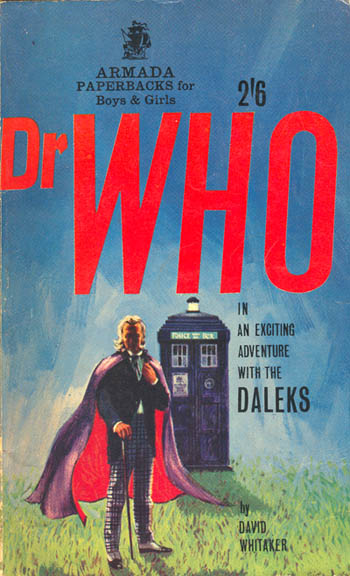 For the next year and a half, Dr. Who books were my only access to the show. Once the guy who ran the book store knew I was into Dr. Who, he even found some collectibles for me, including the original Dr. Who novel from 1964 and several annuals (the Brits were big on doing annuals of popular children’s programs). I loved all this stuff, but I wanted to see the real thing. Finally, in September 1979, the first four seasons of the Tom Baker era were syndicated in the U.S., and my friends at WBFF-TV were nice enough to carry it (I’d like to think because I tipped them off to it). It was great fun to see the show at long last, but my enthusiasm was tempered by the poor production values. In the first Tom Baker serial, there was a forced-perspective shot with an obviously plastic, toy tank in the foreground masquerading as the real thing. I laughed heartily at this pathetic special effect, but I was also pained by how bad this show was. The special effects and production values only got worse with each subsequent episode that aired. I learned later that the BBC was having severe budgetary problems during the late 70s and Dr. Who was one of the shows that suffered most from the cuts. At the time, though, I was just plain disappointed.
For the next year and a half, Dr. Who books were my only access to the show. Once the guy who ran the book store knew I was into Dr. Who, he even found some collectibles for me, including the original Dr. Who novel from 1964 and several annuals (the Brits were big on doing annuals of popular children’s programs). I loved all this stuff, but I wanted to see the real thing. Finally, in September 1979, the first four seasons of the Tom Baker era were syndicated in the U.S., and my friends at WBFF-TV were nice enough to carry it (I’d like to think because I tipped them off to it). It was great fun to see the show at long last, but my enthusiasm was tempered by the poor production values. In the first Tom Baker serial, there was a forced-perspective shot with an obviously plastic, toy tank in the foreground masquerading as the real thing. I laughed heartily at this pathetic special effect, but I was also pained by how bad this show was. The special effects and production values only got worse with each subsequent episode that aired. I learned later that the BBC was having severe budgetary problems during the late 70s and Dr. Who was one of the shows that suffered most from the cuts. At the time, though, I was just plain disappointed.
 I still held the show in great affection during the 80s and was thrilled when Maryland Public Television started showing the old Dr. Who serials commercial free, as they were intended to be aired. By the late 80s, I was even able to see the shows with my favorite Doctor: Jon Pertwee. Ironically, while the 80s saw a spike in Dr. Who’s popularity in the states, the show was struggling for survival in Britain. They were showing the new shows here on public television along with the reruns, and I too was disappointed by the strange turn they were taking. Although the production values improved, the producer seemed fixated on modeling the show after Hitchhiker’s Guide to the Galaxy (Douglas Adams even served as a story editor for a time). While I suspect Douglas Adams was inspired by Dr. Who when he created Hitchhiker’s, I don’t believe Dr. Who was ever meant to be an absurd comedy. I think many viewers felt the same way since Dr. Who was canceled in 1989.
I still held the show in great affection during the 80s and was thrilled when Maryland Public Television started showing the old Dr. Who serials commercial free, as they were intended to be aired. By the late 80s, I was even able to see the shows with my favorite Doctor: Jon Pertwee. Ironically, while the 80s saw a spike in Dr. Who’s popularity in the states, the show was struggling for survival in Britain. They were showing the new shows here on public television along with the reruns, and I too was disappointed by the strange turn they were taking. Although the production values improved, the producer seemed fixated on modeling the show after Hitchhiker’s Guide to the Galaxy (Douglas Adams even served as a story editor for a time). While I suspect Douglas Adams was inspired by Dr. Who when he created Hitchhiker’s, I don’t believe Dr. Who was ever meant to be an absurd comedy. I think many viewers felt the same way since Dr. Who was canceled in 1989.
Fox attempted a pilot for a new Dr. Who show in the mid-90s. It wasn’t bad, and it even bore some resemblance in style to the current show, but it was just a little bland. A regular series was never made. After being such a fixture of British television for so long, it seemed strange that The Doctor would be forever gone. Then in 2005, the BBC found a way to make the old hero work in a new century, and I’m mighty glad they did.
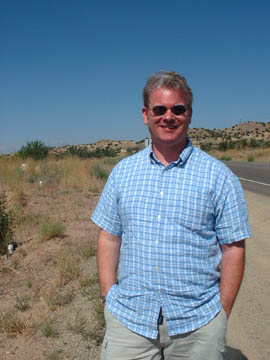 I recently returned from a trip to
I recently returned from a trip to 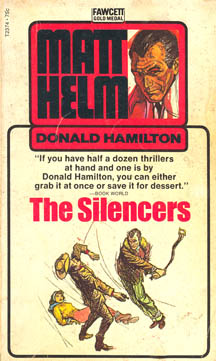 The author, Donald Hamilton, followed the writer’s adage of “write what you know” and based Matt Helm in
The author, Donald Hamilton, followed the writer’s adage of “write what you know” and based Matt Helm in  As we drove around those deserts and mountains, I couldn’t help but think about those harrowing battles Matt Helm fought under the blazing sun, with little cover and no hope of reinforcements. When my wife and I got caught in a heavy thunderstorm on our way to
As we drove around those deserts and mountains, I couldn’t help but think about those harrowing battles Matt Helm fought under the blazing sun, with little cover and no hope of reinforcements. When my wife and I got caught in a heavy thunderstorm on our way to 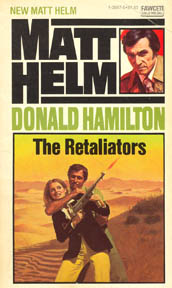 When we visited the town center of
When we visited the town center of 